MainosMemos contains the latest research and information about eye and vision care of children, developmental disabilities, Traumatic/Acquired Brain Injury and other topics of interest to me (and hopefully you!).
Saturday, May 22, 2010
Friday, May 21, 2010
Comment on 3D Vision Syndrome
Dan...don't let this detract from your quality of life and ability to enjoy this new technology.
As the American Optometric Association says, "The 3Ds of the 3D viewing experience are: If you experience Dizziness or Discomfort , see your Doctor of Optometry. " Find a doc who can help by going to the AOA or to the College of Optometrists in Vision Development website. Do it now. DM
A Sneak Preview: DMM scope of practice data series: ophthalmology
The AMA apparently wants to define what multiple professions are and what they can and cannot do. They have written several of these "Data Series" for various professions. It is sad that such an organization has so much arrogance and hubris. Sad.
In any case this podcast comes with a homework assignment:
In order to more fully appreciate this editorial, I am recommending that you read the American Medical Association’s Scope of Practice Data Series for Optometrists first. This homework assignment is completely optional. You only need to read the first 10-12 pages of the AMA’s publication to fully come to appreciate the incredible satirical heights achieved within this editorial while expressing just the right amount of indignant outrage. DM
Free Access to PEDIG Articles
Pharmacological plus optical penalization treatment for amblyopia: results of a randomized trial. Pediatric Eye Disease Investigator Group. Arch Ophthalmol. 2009 Free PMC Article Free text
Patching vs atropine to treat amblyopia in children aged 7 to 12 years: a randomized trial. Scheiman MM, Hertle RW, Kraker RT, Beck RW, Birch EE, Felius J, Holmes JM, Kundart J, Morrison DG, Repka MX, Tamkins SM; Pediatric Eye Disease Investigator Group. Arch Ophthalmol. 2008 Dec;126(12):1634-42.
Free PMC Article Free text
Fixation preference and visual acuity testing in a population-based cohort of preschool children with amblyopia risk factors. Cotter SA, Tarczy-Hornoch K, Song E, Lin J, Borchert M, Azen SP, Varma R; Multi-Ethnic Pediatric Eye Disease Study Group.
Ophthalmology. 2009 Jan;116(1):145-53. Epub 2008 Oct 29. Erratum in: Ophthalmology. 2009 Feb;116(2):174.
Free PMC Article Free text
A randomized trial of near versus distance activities while patching for amblyopia in children aged 3 to less than 7 years. Pediatric Eye Disease Investigator Group.
Ophthalmology. 2008 Nov;115(11):2071-8. Epub 2008 Sep 11.
Free PMC Article Free text
Monocular oral reading performance after amblyopia treatment in children. Repka MX, Kraker RT, Beck RW, Cotter SA, Holmes JM, Arnold RW, Astle WF, Sala NA, Tien DR; Pediatric Eye Disease Investigator Group.Am J Ophthalmol. 2008 Dec;146(6):942-7. Free PMC Article Free text
A randomized trial of atropine vs patching for treatment of moderate amblyopia: follow-up at age 10 years. Pediatric Eye Disease Investigator Group, Repka MX, Kraker RT, Beck RW, Holmes JM, Cotter SA, Birch EE, Astle WF, Chandler DL, Felius J, Arnold RW, Tien DR, Glaser SR. Arch Ophthalmol. 2008 Aug;126(8):1039-44.
Free PMC Article Free text
Visual acuity testability in African-American and Hispanic children: the multi-ethnic pediatric eye disease study.
Cotter SA, Tarczy-Hornoch K, Wang Y, Azen SP, Dilauro A, Borchert M, Varma R; Multi-Ethnic Pediatric Eye Disease Study Group.
Am J Ophthalmol. 2007 Nov;144(5):663-7. Epub 2007 Sep 14.
PMID: 17868633 [PubMed - indexed for MEDLINE]Free PMC ArticleFree text
Related citations
Treatment of strabismic amblyopia with refractive correction. Cotter SA, Edwards AR, Arnold RW, Astle WF, Barnhardt CN, Beck RW, Birch EE, Donahue SP, Everett DF, Felius J, Holmes JM, Kraker RT, Melia BM, Repka MX, Wallace DK, Weise KK; Pediatric Eye Disease Investigator Group. Am J Ophthalmol. 2007 Jun;143(6):1060-3.
Free PMC Article Free text
Visual acuity testability in African-American and Hispanic children: the multi-ethnic pediatric eye disease study. Cotter SA, Tarczy-Hornoch K, Wang Y, Azen SP, Dilauro A, Borchert M, Varma R; Multi-Ethnic Pediatric Eye Disease Study Group. Am J Ophthalmol. 2007 Nov;144(5):663-7. Epub 2007 Sep 14.
Free PMC Article Free text
A randomized trial to evaluate 2 hours of daily patching for strabismic and anisometropic amblyopia in children. Wallace DK; Pediatric Eye Disease Investigator Group, Edwards AR, Cotter SA, Beck RW, Arnold RW, Astle WF, Barnhardt CN, Birch EE, Donahue SP, Everett DF, Felius J, Holmes JM, Kraker RT, Melia M, Repka MX, Sala NA, Silbert DI, Weise KK. Ophthalmology. 2006 Jun;113(6):904-12.
Free PMC Article Free text
Treatment of anisometropic amblyopia in children with refractive correction.
Cotter SA; Pediatric Eye Disease Investigator Group, Edwards AR, Wallace DK, Beck RW, Arnold RW, Astle WF, Barnhardt CN, Birch EE, Donahue SP, Everett DF, Felius J, Holmes JM, Kraker RT, Melia M, Repka MX, Sala NA, Silbert DI, Weise KK.
Ophthalmology. 2006 Jun;113(6):895-903.
Free PMC Article Free text
Waning maternal antibodies put infants at risk for measles in first year
New Daily Persistent Headache in Children and Adolescents
Kids with Epilepsy Have White Matter Growth Delay
Studies Link Infertility Treatments to Autism
First Drug to Demonstrate Therapeutic Effect in a Type of Autism
Amyloid-Beta Protein May Accumulate In Eyes Of Down Syndrome Patients, Causing Cataracts

The UK's Daily Mail (5/21, Derbyshire) reports that, according to a study published May 20 in the journal PLoS One, researchers are developing "an eye test that can detect Alzheimer's years before any symptoms show." During a five-year study, scientists found that people with Down syndrome "have an extra copy of a key Alzheimer's gene that leads to increased amyloid-beta accumulation in the brain" as well as to amyloid-beta protein accumulation within the lenses of the eyes. The investigators now "believe the same protein could be found in the eyes of people without Down's syndrome who are suffering from Alzheimer's disease."
HealthDay (5/20, Dotinga) reported that study co-author Lee E. Goldstein, MD, PhD, of the Boston University School of Medicine, "said the team is developing an eye scanner to measure amyloid-beta...in the lens." Goldstein stated, "This approach may provide a way for early detection and monitoring of related pathology in the brain. Effective treatments for the brain disease in Down syndrome and Alzheimer's disease are on the horizon, and early detection is the key for successful intervention."
Thursday, May 20, 2010
ADHD-related symptoms among adults in out-patient psychiatry and female prison inmates as compared with the general population
disabilities were similar in men and women. ADHD symptoms and related problems occurred in 50% of the female prisoners, which is similar to male prisoners according to the literature....
Comments: Full pdf of article available by clicking title. DM
Babies Are Snooze-Learners
Major Depression Prevalent After Traumatic Brain Injury
Millions Of Americans May Suffer From Vision Issues Making 3-D Films Difficult To Watch

Millions Of Americans May Suffer From Vision Issues Making 3-D Films Difficult To Watch, AOA Says.
The Wall Street Journal (5/18, Valentino-DeVries) "Digits" blog reported that, according to the American Optometric Association, an estimated three million to nine million Americans suffer from vision issues which make it difficult or even impossible for them to view 3-D television shows and movies. While some people get eyestrain from watching 3-D films, others become dizzy, nauseated, and experience headaches. The AOA suggests that people having difficulty with 3-D films should see their optometrist for evaluation of possible dysfunction in their binocular vision.
Home, Preschool And School Coordination Boosts Achievement
Implanted Lenses May Not Be Superior To Contacts For Babies With Cataracts
Strabismus surgery outcome among children and young adults with Down syndrome
Comments: This is awful. It has been well established that the esotropia in those who have Down Syndrome is typically due to accommodation. I've only read the abstract so far (I have the article on order) so I do not know if they tried bifocals first...but from what I read here...a successful outcome meant the eyes did not have to be straight...just within 10 PD of alignment! DM
12 State Vision Midwest Conference
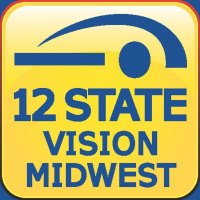
The 12 State Vision Midwest Conference and Expo (Oct. 22nd-24th 2010) is excited that Dominick M. Maino,OD, MEd, FAAO, FCOVD-A, Professor of Pediatrics/Binocular Vision at the Illinois College of Optometry/Illinois Eye Institute, Editor Optometry & Vision Development, and Northwest Optometric Associates practitioner will be presenting information on the visual problems associated with traumatic brain injury and how they are treated.
What are the other blogs saying about 3D Movie Vision Syndrome?
Samsung: 3DTV Not Inherently Dangerous to Elderly
The Truth About 3D TV
Samsung issues warnings about 3-D TV
Eye problems hinder people watching 3-D films like 'Avatar'
3D movies make you feel like crap? Headache, dizziness may be sign of vision problem
WWTW Interview: Optometrist Dr. Jeffrey Anshel
Vision problems may play spoilsport in viewing 3D movies
Millions of Americans Have Difficulty Seeing 3D
Millions Of Americans May Suffer From Vision Issues Making 3-D Films Difficult To Watch
3-D Movies Trigger Motion Sickness for Some, Doctors Suggest Eye Exams
Some People Can’t Stomach the New 3-D Movies
Having trouble seeing 3D?
Dr. Mitchell Scheiman: CE at ICO June 27th

Dr. Eric Conley, ICO CE Director says... we welcome the "Dr. & Mrs. Dominick M. Maino Visiting Professor," Dr. Mitchell Scheiman.
Dr. Scheiman is currently a Professor and Director of the Pediatric and Binocular Vision Programs at the Pennsylvania College of Optometry, and Study Chair of the Convergence Insufficiency Treatment Trial. He is a Diplomat in Binocular Vision, Vision Perception and Pediatrics in the American Academy of Optometry, and a Fellow in COVD. He has served on many national committees for the American Optometric Association and the American Academy of Optometry and serves on the editorial board of several journals. He has published over 100 journal articles and has written 3 textbooks, including Clinical Management of Binocular Vision (Scheiman and Wick), Optometric Management of Learning-Related Vision Problems (Scheiman and Rouse).
Also on the program, Professor Emeritus, Alfred Rosenbloom, O.D., M.A., D.O.S will be here to share insights into caring for the growing aging population - we are honored to have both speakers in such a prestigious program.
More details below:
Visiting Professor Continuing Education Program
June 27, 2010 at the Illinois College of Optometry
6 Hours of CE Credit (Non-tested, COPE Pending)
8:30 A.M. to 3:00 P.M. Cost: $150
Should You Change the Way You Treat Amblyopia?
Medico-Legal Issues in Optometry
Evidence Based Treatment of Convergence Insufficiency
Meeting the Challenges of the Aging Population
Featuring:
Mitchell Scheiman, OD, FCOVD
Eric Conley, OD
Alfred Rosenbloom, OD, MA, DOS
Download the registration form here.
Program includes parking, continental breakfast, lunch, course materials, and certificate of attendance. No tests are offered for this program. All courses are COPE qualification pending. The last day to pre-register is June 23, 2010. All registrations received after this date are subject to a $25 late registration fee. You will receive an email confirmation within 3 business days after we receive your registration. If you do not receive your confirmation, please call the CE Coordinator at 312-949-7426.
Contact info:Diane Gillette
Coordinator of Continuing Education Illinois College of Optometry
312-949-7426 [email protected]
The Dr. and Mrs. Dominick M. Maino Visiting Professor Endowment Fund is used to bring to the ICO campus nationally recognized experts in the fields of pediatric optometry/ophthalmology, special education, occupational therapy, physical therapy, speech and language therapy, binocular vision, vision and learning, and/or special populations (primarily in the area of developmental disabilities, traumatic and acquired brain injury). The Visiting Professor shares his/her expertise with the ICO community, makes presentations to faculty and students and is also available for ICO’s Continuing Education Program as well. During the past two years the Dr. & Mrs. Dominick M. Maino Visiting Professors included Kenneth Cuiffreda, PhD, FAAO, FCOVD-A and Leonard Press, OD., FAAO, FCOVD.
Understanding Retinal Disease: Continuing Education Program

From Dr. Eric Conley (ICO CE Diretor):
The Illinois College of Optometry Continuing Education welcomes you to register for upcoming events for CE Credit. Please take advantage of this opportunity to see great speakers and colleagues offer the latest in their area of expertise.
Sunday, June 13, 2010
First, our retina program will be offered in conjunction with Salus University bringing dynamic and knowledgeable lecturers.
Carlo Pelino, OD, who coincidentally served as my preceptor at Salus University (PCO), brings a unique background as one of the only Retina Fellowship Trained Optometrist in the nation; under the direction of Dr. Stephen H. Sinclair, M.D., a Harvard Medical School graduate, ophthalmology resident of Massachusetts Eye and Ear Infirmary, and a vitreo-retinal fellow at the Medical College of Wisconsin, Dr. Pelino will be able to share considerable knowledge and insight into vitreo-retinal disease.
Joe Pizzimenti, OD, a fellow ICO graduate, will share the stage with Carlo bringing further insight and prospective information. Joe lectured last summer for the Alumni CE event with excellent reviews and a very dynamic approach.
Seenu Hariprasad, MD will culminate the program with relevant referral and surgical discussions.
Please contact:
Diane Gillette
Coordinator of Continuing Education
Illinois College of Optometry
312-949-7426
[email protected]
or click the title above for more information. DM
Why Aren't Doctors Allowed to Care About Money? (Part 2)
A couple of consumer surveys had shown that some people wondered why doctors were not universally delighted with the healthcare reform plan. Respondents felt that doctors should be so pleased at the expanded coverage that they'd ignore their own income concerns.
When this question ("Why aren't doctors allowed to care about money?") was posted on The Kane Scrutiny blog on March 25, I suggested 3 possible answers to the question: (1) Consumers feel that doctors still make enough money; (2) people in helping professions aren't supposed to care about money; and (3) patients have an emotional need to believe that their physicians care only about patient well-being, not about money...
Comments: Several years ago I had neck surgery because of multiple herniated discs. The neurosugeon's bill alone was $10,000. Now I happen to think that my neck is worth at least 10 grand...the insurance company however paid him only $6,000. So what was my neck really worth? Why do we continue this "shell game" about the cost of health care (including eye and vision care). I doubt the Obama Health Care program is going to fix this problem. What other profession would take less money for what they do? Have you ever tried to tell your plumber that although he charged you $1,000 you are only going to pay him $600? Good luck with that. For more info click on the title above. DM
Why 20/20 May Not Mean Perfect Vision

...You know about visualization, right. In a player’s mind, he sees himself making the perfect pass to his linemate or imagines the puck whizzing past the goalie into the net. He feels the satisfaction of moving the puck down the ice and the excitement of scoring. But what if it doesn’t work for your kid? Your child winds up frustrated because his shot didn’t look the same on the ice as it did in his mind. Before you decide hockey just isn’t his sport, let an optometrist (not the pediatrician) check his eyes. Your child might have 20/20 eyesight, but still have a vision problem.
Does your child:
* Misjudge the distance of a pass?
* Shoot wide of the goal?
* Skate past the puck?....
Comments: This story in Minnesotta Hockey features information given by my colleague, Dr. Lynn Hellerstein. Click on the title to read it all. DM
Wednesday, May 19, 2010
Healthcare Associated Infections
I recently received this email (see below) from Ms. Barbara Dunn, of Kimblery-Clark Healthcare which has put together a campaign called "Not on My Watch" to inform all about Healthcare Associated Infections.
Healthcare Associated Infections injure and kill thousands each year. There are many things your health care provider (including your optometric physician) can do to limit these infections. The number one thing is WASHING YOUR HANDS! (See video above). I am constantly telling my students to wash their hands before and after patient encounters. I always wash my hands (in front of the patient if I can) before interacting with them. It is amazing how many of my patients give me positive comments on this....and then tell me horror stories about how other healthcare providers do not do this. Wash your hands. Always! DM
Hello Dominick
You may have seen that the government recently released its annual report on the quality of health care Americans receive. While there have been some improvements, the news was not positive: hospitals still have work to do to put an end to the ongoing, but very solvable, problem of patients acquiring life-threatening infections in hospitals.
Patients, their caregivers, and health care professionals need to educate themselves on the dangers and what can be done to protect people from getting sick while in the very place they went in order to get well.
To help achieve that, Kimblery-Clark Healthcare has put together a website called "Not on My Watch" at www.haiwatch.com to educate patients and health care professionals. Their goal is to eliminate these preventable illnesses and their often tragic consequences.
I hope you will help in this effort, too, by informing the readers of Maino's Memos about how they can learn more about protecting patients from preventable hospital infections. I've created a useful site that you're welcome to check out and grab resources from:
http://haiwatchnews.com
Please let me know if you have any questions or need more information. If you are able to post about this, I'd love to get the link to your post.
Thank you,
Barbara
--
Barbara Dunn
[email protected]
www.haiwatch.com
Comments: Barbara, it was my pleasure to help you get out this most important message. The bottom line is if you are a patient ask all healthcare providers to do all they can to limit Healthcare Associated Infections....if you are a doctor...you can start by Washing Your Hands!! DM
Missing Out on the 3-D Revolution: On the Wall Street Journal Blog
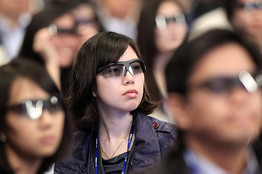
Jennifer (the author of the technology blog for the Wall Street Journal and the article below) and I had an opportunity to discuss the various aspects of the 3D Movie Vision Syndrome and the many symptoms associated with this disorder. As my colleague Dr. Len Press says:"The 3Ds of the 3D viewing experience are: "If you experience Dizziness or Discomfort, see your Doctor of Optometry. " DM
Missing Out on the 3-D Revolution
By Jennifer Valentino-DeVries
Hollywood studios and TV manufacturers are banking on 3-D to be the next big thing in entertainment. But for people with certain eye problems, the idea of a 3-D movie isn’t much fun at all.
Between 3 million and 9 million people in the U.S. have vision problems that would prevent them from watching 3-D movies and TV shows, even though they can see two-dimensional images, according to the American Optometric Association.
Normally, each eye views the world from a slightly different perspective, and when the brain puts the two images together, the person gets a sense of three dimensions. Movies using 3-D technology mimic this effect on a two-dimensional screen by using glasses to put one image in one eye and another, somewhat different, image in the other eye. But people who can’t coordinate their eyes well or focus appropriately can be unable to see the 3-D effects at all, said Dominick Maino, professor of pediatrics and binocular vision at the Illinois College of Optometry.
Even people with good vision could experience discomfort while watching because of the way 3-D technology works, said Lisa Park, a clinical assistant professor with the Department of Ophthamology at NYU’s Langone Medical Center. “You’re trying to force the eyes to look at two images and trying to trick the brain into thinking that the images are actually three-dimensional” — a situation that is bound to cause strain in some people, she said.
People with mild vision problems may feel discomfort or nausea and “will just close an eye through the whole movie” because of it, or they may experience dizziness or headaches but not associate them with their vision, Dr. Maino said.
Shannon Wyatt, a certified athletic trainer in Oak Park, Ill., said she felt nauseated after watching “Avatar” but chalked it up to low blood sugar until talking with Dr. Maino. “I saw the movie ‘Up,’ and I don’t think that bothered me a whole lot,” she said. “‘A Christmas Carol’ bothered me, but ‘Avatar’ was the worst.” She has since been undergoing therapy for what is known as a convergence disorder, in which the eyes are not able to turn toward each other adequately.
The American Optometric Association recommends that people see an eye doctor and be evaluated for binocular-vision dysfunction if they experience headaches, nausea or dizziness after watching 3-D programming.
Dr. Park said many people who are uncomfortable watching 3-D movies should avoid watching them, especially for long periods of time.
Comments: As usual my ophthalmologist colleague, Dr. Park, as noted in the article above missed the point. You do not have to suffer when watching a 3D movie. You do not have to avoid the things in your life you enjoy. You do not have to suffer a decrease in your quality of life. If you have the symptoms of 3D Movie Vision Syndrome, go to your doctor of optometry for the appropriate diagnosis and treatment. If you go to the AOA or COVD websites and use the doctor locator, a qualified optometric physician will help you achieve single, clear, comfortable, two-eyed vision using optometric vision therapy that in turn will make your 3D movie experience enjoyable and worth the extra expense. DM
Tuesday, May 18, 2010
3-D TV and Movies Look to Attract Viewers But Not Everyone Can ‘See’ What All the Hype is About: The Movie
The American Optometric Association has been kind enough to use my talents to help get the word out about binocular vision dysfunction and the new 3D craze sweeping the country.
Binocular vision dysfunction...(eye coordination, focusing, & eye movement problems)...within the general population has reached ...if not pandemic proportions...at least epidemic status. There are at least 3 million men, women, and children with amblyopia (lazy eye) ... many undiagnosed and untreated. There are at least 18 million individuals with strabismus (eye turns)...many undiagnosed and untreated....and at least one study suggests that 56% of those between 18 and 38 yrs of age have symptoms related to binocular vision dysfunction.
That's the bad news. The good news is that 3D movies, television and video games have the potential to unmask these undiagnosed and untreated problems. If you watch 3D and "don't get it"...for instance you do not see the 3D...see your family optometrist. If you watch 3D and get headaches, eyestrain, diplopia (seeing double), nausea or other symptoms...see your family optometrist.
The good news continues....there is a treatment for these disorders. This treatment is called optometric vision therapy.
The good news still continues...current research in adult neuro-plasticity studies show that even the adult brain can change...which means adults can benefit from optometric vision therapy. If you are not familiar with the story of Stereo-Sue (Susan Barry, PhD) and how she participate in a program of optometric vision therapy to treat an eye turn present since childhood....and how she now has attained 3D vision when practically everyone over the years told her it was impossible...well, read her book and visit her Psychology Today blog.
If your current doctor does not test for binocular vision problems and/or does not treat these disorders, you can find an Doctor of Optometry to help by going to the American Optometric Association and the College of Optometrists in Vision Development doctor locator websites today. If you live in the Chicago-land area, you can contact me at the Illinois Eye Institute and at Northwest Optometric Associates.
As my good friend and colleague, Dr. Len Press says: "The 3Ds of the 3D viewing experience are: If you experience Discomfort or Dizziness, see your Doctor of Optometry. " That is very good advice.
Need additional help? Have additional questions? No problem. Send me an email note and I'd be happy to assist you in any way I can.
Dominick M. Maino, OD, MEd, FAAO, FCOVD-A
3-D TV and Movies Look to Attract Viewers But Not Everyone Can ‘See’ What All the Hype is About
ST. LOUIS, MO, May 18, 2010 /PRNewswire/ — As Hollywood prepares for a summer filled with 3-D blockbuster hopefuls and cable networks launch 3-D networks and programming for newly-released 3-D televisions, the trend towards this new technology is hard to miss—except for the millions of Americans who literally can’t see it.
Movies including “Avatar” and “Alice in Wonderland” have already left their impression on the 3-D screen and new movies using the technology are making their way into theaters across the country. Meanwhile, ESPN and the Discovery Channel are preparing to broadcast in 3-D. This new technology is catching the eyes of fans nationwide, but some people may not be able to enjoy the 3-D experience because of vision problems.
“Quite simply, people who have even a small vision misalignment or those who don’t have equal vision in both eyes may not be able to see 3-D images properly,” said Dr. Leonard Press, chair of the American Optometric Association’s (AOA) Pediatrics and Binocular Vision Committee. “Individuals with unstable focusing or difficulty in coordinating vision with other senses can experience headaches and other uncomfortable side effects from viewing 3-D movies.”
According to the American Optometric Association, anywhere from three to nine million people have problems with binocular vision prohibiting them from watching 3-D TV and movies. Binocular vision is the ability to align both eyes accurately on an object and combine the visual images from each eye into a single, in-depth perception. The problem comes from fatigue caused when 3-D technology forces the eyes to make adjustments to focus simultaneously on images that are near and far away.
Symptoms indicating a potential problem with the ability to see images in 3-D vary from person to person. According to the results of the AOA’s American Eye-Q® survey, the majority of individuals who suffer from 3-D vision complications most often experience headaches (13 percent), blurred vision (12 percent) and dizziness (11 percent).
The AOA recommends seeing a doctor of optometry for further evaluation if consumers answer yes to any of the following questions:
* Is the 3-D viewing experience not as vivid as it is for others watching the same picture?
* Do you experience eyestrain or headaches during or after viewing?
* Do you feel nauseous or dizzy during or after viewing?
* Are you more comfortable viewing 2-D TV or movies instead of 3-D TV/movies?
* Is it difficult for your eyes to adjust back to normal after watching 3-D TV/movies?
“Watching 3-D programming can unmask issues such as lazy eye, convergence insufficiency, poor focusing skills and other visual problems consumers might not have previously known existed,” said Dr. Dominick Maino, a Professor of Pediatrics/Binocular Vision at the Illinois College of Optometry’s Illinois Eye Institute. “Research shows that up to 56 percent of those ages 18 to 38 have symptoms related to a binocular vision problem. It is important to know that studies also show optometric vision therapy can help alleviate these problems and make the experience of watching these movies more enjoyable.”
Optometric vision therapy is a sequence of therapeutic procedures individually prescribed and monitored by an optometrist to develop efficient visual skills and processing. Following a comprehensive eye examination, the optometrist may prescribe vision therapy if the results of the exam indicate a need and if it is determined an appropriate treatment option for the patient. The vision therapy program is based on the results of standardized tests, the needs of the patient, and the patient's signs and symptoms. Optometric vision therapy re-educates the brain to achieve single, clear, comfortable, two-eyed vision that improves eye coordination, focusing and eye movement, ultimately enhancing the 3-D viewing experience.
The AOA also recommends visiting a doctor of optometry on a regular basis for comprehensive eye exams to help ensure healthy vision overall. The AOA guidelines suggest adults age 60 and under have a comprehensive eye exam every two years and then annually thereafter. Children should be evaluated every other year as long as they are in school. Based on an individual’s eye health or the presence of certain risk factors, your optometrist may recommend more frequent visits.
To find an optometrist in your area, or for additional information please visit the AOA’s Web site at www.AOA.org or the College of Optometry in Vision Development Web site at www.COVD.org.
About the survey:
The fifth annual American Eye-Q® survey was created and commissioned in conjunction with Penn, Schoen & Berland Associates (PSB). From April 14-21, 2010, using an online methodology, PSB interviewed 1,007 Americans 18 years and older who embodied a nationally representative sample of U.S. general population. (Margin of error at 95 percent confidence level.)
About the American Optometric Association (AOA):
The American Optometric Association represents approximately 36,000 doctors of optometry, optometry students and paraoptometric assistants and technicians. Optometrists serve patients in nearly 6,500 communities across the country, and in 3,500 of those communities are the only eye doctors. Doctors of optometry provide two-thirds of all primary eye care in the United States.
American Optometric Association doctors of optometry are highly qualified, trained doctors on the frontline of eye and vision care who examine, diagnose, treat and manage diseases and disorders of the eye. In addition to providing eye and vision care, optometrists play a major role in a patient’s overall health and well-being by detecting systemic diseases such as diabetes and hypertension.
Prior to optometry school, optometrists typically complete four years of undergraduate study, culminating in a bachelor’s degree. Required undergraduate coursework for pre-optometry students is extensive and covers a wide variety of advanced health, science and mathematics. Optometry school consists of four years of post-graduate, doctoral study concentrating on both the eye and systemic health. In addition to their formal training, doctors of optometry must undergo annual continuing education to stay current on the latest standards of care. For more information, visit www.aoa.org.
Monday, May 17, 2010
How Susan Barry re-wired her brain

...Susan Barry, currently professor of neuroscience at Mount Holyoake College is another. She had been born cross-eyed, and so viewed the world with one eye at a time: she did not have binocular vision. She was at a party when she happened to meet Dr. Oliver Sacks. She’d had operations to correct her squint and no longer looked cross-eyed to a casual observer, but her eyes were still not working together. She had remained “happily ignorant” of the fact that she lacked binocular vision until she went to college.
She was told by doctors that vision therapy wouldn’t correct her problem.
But when she was in her late 40s, it became increasingly difficult to see things at a distance. In February, 2002 she was given exercises to do at home and in her next session the improvement in stereo vision was immediate and dramatic! Sue has written a book about her experiences and in 2006 Oliver Sacks wrote an article on her called “Stereo Sue”. She worked hard on her stereo perception and it has increased measurably—including an ability to even see random-dot stereograms....
Comments: This blogger almost got the story right. Susan Barry, PhD (over the past couple of years we've become friends) worked very hard with a behavioral optometrist doing optometric vision therapy to get her eyes straight and to see in 3 dimensions. This involved in-office and out of office therapy. To find a doctor who can help you go to http://www.covd.org today. DM
The 3Ds of the 3D viewing experince
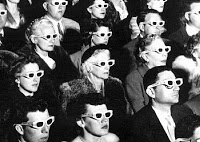
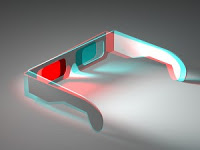
The 3Ds of the 3D viewing experience
If you experience Discomfort or Dizziness, see your Doctor of Optometry.
Comments: I wish I could take credit for this....but all credit goes to my outstanding colleague, Dr. Len Press!! Way to go Len! DM
From Optometry & Vision Science
Link Between Child Care and Academic Achievement and Behavior Persists Into Adolescence
...Teens who were in high-quality child care settings as young children scored slightly higher on measures of academic and cognitive achievement and were slightly less likely to report acting-out behaviors than peers who were in lower-quality child care arrangements during their early years, according to the latest analysis of a long-running study funded by the National Institutes of Health.... And teens who had spent the most hours in child care in their first 4½ years reported a slightly greater tendency toward impulsiveness and risk-taking at 15 than did peers who spent less time in child care....
Llarning Disability Testing and Cure - Have you Tried Vision Therapy?
Comments: These are comments from a dad looking for answers. He found some with Dr. Applebaum and optometric vision therapy. DM
3-D Films Help Detect Undiagnosed Vision Problems
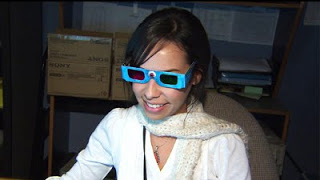 ...More than fifty percent of the population will have difficulty watching a 3-D film and that could indicate an eye problem that could have significant impacts.
...More than fifty percent of the population will have difficulty watching a 3-D film and that could indicate an eye problem that could have significant impacts. The unintended bonus of 3-D movies; uncovering undiagnosed vision problems.
Blockbuster 3-D movies aren't always a hit with some viewers, many viewers are leaving the theatres sick. But optometrists say that could mean there is a vision problem that needs to be treated.
They say it could be a wake-up call. Dr. Elise Brisco says if you are having discomfort when watching a 3-D film, it could indicate a vision problem that could significantly impact other parts of your life.
Nine year old Natasha Milora couldn't wait to see Avatar in 3-D, that is until she got there and started watching the film. She says it made her feel dizzy, nauseous, and gave her a headache....
Comments: Actually the research shows that 56% of those 18-38 years of age have symptoms related to a binocular vision dysfunction which could make 3D movies, TV and games less enjoyable with 3 to 6% have having serious eye problems that would stop them from being able to see 3D at all!! DM
Pesticides Linked to ADHD in Kids
Mixed Results for Lower Oxygenation in Preterm Infants
Rapid Weight Gain in Preemies Equals Higher IQ
Home Gene-Testing Kits "Not Ready For Prime Time
New Research Sheds Light On How To Better Use Oxygen To Treat Extremely Premature Babies.
USA Today (5/17, Szabo) reports, "When treating the youngest preemies -- those born before 27 weeks of gestation, or more than three months early -- doctors traditionally have given them surfactant and put them on ventilators, which involves inserting a tube into their windpipes." Such interventions, however, "can cause serious complications, such as lung injuries and infections." Now, new research appearing in the New England Journal of Medicine indicates that "it's safe to try a kinder, gentler type of oxygen therapy first before resorting to harsher, more invasive ways to help them breathe."
In fact, researchers at the Eunice Kennedy Shriver National Institute of Child Health and Human Development Neonatal Research Network "found no significant difference in the rate of death or bronchopulmonary dysplasia between premature babies receiving early continuous positive airway pressure (CPAP) with limited ventilation and those treated with early intubation and surfactant," Medscape (5/16, Anderson) reported. The Surfactant, Positive Pressure, and Oxygenation Randomized Trial (SUPPORT) also revealed that "compared with infants receiving surfactant treatment, those treated with CPAP had a lower rate of intubation and postnatal corticosteroid use, and a shorter duration of ventilation without an increased risk for adverse neonatal outcomes."
Meanwhile, a second group of researchers presenting data at a medical meeting explained that "extremely preterm infants had a significant reduction in severe retinopathy with lower oxygen saturation levels, but a higher mortality negated the benefit," MedPage Today (5/16, Bankhead) reported. Specifically, "a lower oxygenation target reduced the risk of severe retinopathy or death (the composite primary outcome) by about 10% compared with higher oxygenation levels." Again, "infants managed with lower oxygen saturation had a 27% increase in the mortality hazard."
Overall, the new "research is shedding light on how to better use oxygen to treat extremely premature babies," HealthDay (5/16, Dotinga) reported.
